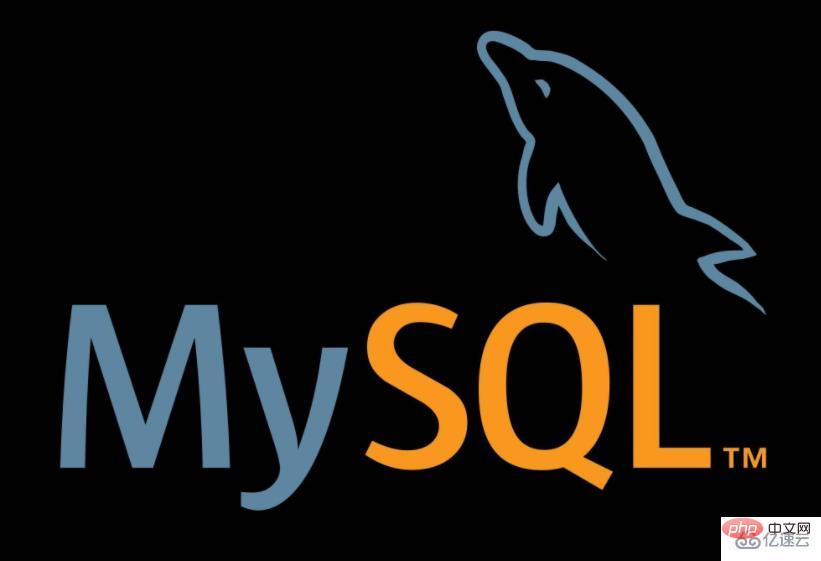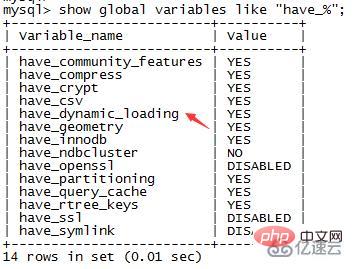How to handle mysql innodb exception

1. Roll back and reinstall mysql
In order to avoid the trouble of importing this data from other places, first reinstall the current database Make a backup of the database file (/var/lib/mysql/location). Next, I uninstalled the Percona server 5.7 package, reinstalled the original 5.1.71 package, and started the mysql service. It prompted Unknown/unsupported table type: innodb and could not start normally.
110509 12:04:27 InnoDB: Initializing buffer pool, size = 384.0M 110509 12:04:27 InnoDB: Completed initialization of buffer pool InnoDB: Error: log file ./ib_logfile0 is of different size 0 5242880 bytes InnoDB: than specified in the .cnf file 0 157286400 bytes! 110509 12:04:27 [ERROR] Plugin 'InnoDB' init function returned error. 110509 12:04:27 [ERROR] Plugin 'InnoDB' registration as a STORAGE ENGINE failed. 110509 12:04:27 [ERROR] Unknown/unsupported table type: innodb 110509 12:04:27 [ERROR] Aborting 110509 12:04:27 [Note] /usr/sbin/mysqld: Shutdown complete
Delete the /var/lib/mysql/ directory, restart the database service, and initialize it. It is found to be normal. Show engines can find the innodb engine. Then stop the database, overwrite the contents of the previously backed up /var/lib/mysql/ directory with the contents of the current location, and restart. I also found that it could not be started, and the error content was the same as before.
The structure of the contents of the /var/lib/mysql directory is as follows:
-rw-rw---- 1 mysql mysql 10485760 2月 26 18:10 ibdata1 -rw-rw---- 1 mysql mysql 5242880 2月 26 18:10 ib_logfile0 -rw-rw---- 1 mysql mysql 5242880 2月 26 17:20 ib_logfile1 drwx------ 2 mysql mysql 4096 2月 26 17:20 mysql drwx------ 2 mysql mysql 4096 2月 26 17:24 wiki
The wiki directory is the library for test data, the ibdata1 file is the data file, the two files starting with ib are log files, mysql The directory contains system library-related things. Use the initialized data again, and overwrite the wiki directory and ibdata1 file to the /var/lib/mysql directory. You can start normally and log in normally.
2. Reinstall the innodb module
However, when backing up through mysqldump, it prompts unknown table engine "Innodb". After logging in, check all the current engine types and find that the innodb type does not exist among them:

Use the alter command to modify the type of one of the tables to MyISAM. , and found that an error was still reported.

Through find, it is found that there is a ha_innodb_plugin.so file in the /usr/lib64/mysql/plugin/ directory. I have the impression that later versions of mysql5 support online plug-in installation. Check the following to confirm that it is indeed supported:

install plugin innodb soname 'ha_innodb.so';
plugin-load=innodb=ha_innodb_plugin.so plugin_dir=/usr/lib64/mysql/plugin/ default-storage-engine=InnoDB
InnoDB: Database page corruption on disk or a failed InnoDB: file read of page 7. InnoDB: You may have to recover from a backup. InnoDB: It is also possible that your operating InnoDB: system has corrupted its own file cache InnoDB: and rebooting your computer removes the InnoDB: error. InnoDB: If the corrupt page is an index page InnoDB: you can also try to fix the corruption InnoDB: by dumping, dropping, and reimporting InnoDB: the corrupt table. You can use CHECK InnoDB: TABLE to scan your table for corruption. InnoDB: See also http://dev.mysql.com/doc/refman/5.1/en/forcing-innodb-recovery.html
innodb_force_recovery=6
The above is the detailed content of How to handle mysql innodb exception. For more information, please follow other related articles on the PHP Chinese website!

Hot AI Tools

Undresser.AI Undress
AI-powered app for creating realistic nude photos

AI Clothes Remover
Online AI tool for removing clothes from photos.

Undress AI Tool
Undress images for free

Clothoff.io
AI clothes remover

Video Face Swap
Swap faces in any video effortlessly with our completely free AI face swap tool!

Hot Article

Hot Tools

Notepad++7.3.1
Easy-to-use and free code editor

SublimeText3 Chinese version
Chinese version, very easy to use

Zend Studio 13.0.1
Powerful PHP integrated development environment

Dreamweaver CS6
Visual web development tools

SublimeText3 Mac version
God-level code editing software (SublimeText3)

Hot Topics
 MySQL: An Introduction to the World's Most Popular Database
Apr 12, 2025 am 12:18 AM
MySQL: An Introduction to the World's Most Popular Database
Apr 12, 2025 am 12:18 AM
MySQL is an open source relational database management system, mainly used to store and retrieve data quickly and reliably. Its working principle includes client requests, query resolution, execution of queries and return results. Examples of usage include creating tables, inserting and querying data, and advanced features such as JOIN operations. Common errors involve SQL syntax, data types, and permissions, and optimization suggestions include the use of indexes, optimized queries, and partitioning of tables.
 MySQL's Place: Databases and Programming
Apr 13, 2025 am 12:18 AM
MySQL's Place: Databases and Programming
Apr 13, 2025 am 12:18 AM
MySQL's position in databases and programming is very important. It is an open source relational database management system that is widely used in various application scenarios. 1) MySQL provides efficient data storage, organization and retrieval functions, supporting Web, mobile and enterprise-level systems. 2) It uses a client-server architecture, supports multiple storage engines and index optimization. 3) Basic usages include creating tables and inserting data, and advanced usages involve multi-table JOINs and complex queries. 4) Frequently asked questions such as SQL syntax errors and performance issues can be debugged through the EXPLAIN command and slow query log. 5) Performance optimization methods include rational use of indexes, optimized query and use of caches. Best practices include using transactions and PreparedStatemen
 How to connect to the database of apache
Apr 13, 2025 pm 01:03 PM
How to connect to the database of apache
Apr 13, 2025 pm 01:03 PM
Apache connects to a database requires the following steps: Install the database driver. Configure the web.xml file to create a connection pool. Create a JDBC data source and specify the connection settings. Use the JDBC API to access the database from Java code, including getting connections, creating statements, binding parameters, executing queries or updates, and processing results.
 Why Use MySQL? Benefits and Advantages
Apr 12, 2025 am 12:17 AM
Why Use MySQL? Benefits and Advantages
Apr 12, 2025 am 12:17 AM
MySQL is chosen for its performance, reliability, ease of use, and community support. 1.MySQL provides efficient data storage and retrieval functions, supporting multiple data types and advanced query operations. 2. Adopt client-server architecture and multiple storage engines to support transaction and query optimization. 3. Easy to use, supports a variety of operating systems and programming languages. 4. Have strong community support and provide rich resources and solutions.
 MySQL's Role: Databases in Web Applications
Apr 17, 2025 am 12:23 AM
MySQL's Role: Databases in Web Applications
Apr 17, 2025 am 12:23 AM
The main role of MySQL in web applications is to store and manage data. 1.MySQL efficiently processes user information, product catalogs, transaction records and other data. 2. Through SQL query, developers can extract information from the database to generate dynamic content. 3.MySQL works based on the client-server model to ensure acceptable query speed.
 How to start mysql by docker
Apr 15, 2025 pm 12:09 PM
How to start mysql by docker
Apr 15, 2025 pm 12:09 PM
The process of starting MySQL in Docker consists of the following steps: Pull the MySQL image to create and start the container, set the root user password, and map the port verification connection Create the database and the user grants all permissions to the database
 Laravel Introduction Example
Apr 18, 2025 pm 12:45 PM
Laravel Introduction Example
Apr 18, 2025 pm 12:45 PM
Laravel is a PHP framework for easy building of web applications. It provides a range of powerful features including: Installation: Install the Laravel CLI globally with Composer and create applications in the project directory. Routing: Define the relationship between the URL and the handler in routes/web.php. View: Create a view in resources/views to render the application's interface. Database Integration: Provides out-of-the-box integration with databases such as MySQL and uses migration to create and modify tables. Model and Controller: The model represents the database entity and the controller processes HTTP requests.
 How to install mysql in centos7
Apr 14, 2025 pm 08:30 PM
How to install mysql in centos7
Apr 14, 2025 pm 08:30 PM
The key to installing MySQL elegantly is to add the official MySQL repository. The specific steps are as follows: Download the MySQL official GPG key to prevent phishing attacks. Add MySQL repository file: rpm -Uvh https://dev.mysql.com/get/mysql80-community-release-el7-3.noarch.rpm Update yum repository cache: yum update installation MySQL: yum install mysql-server startup MySQL service: systemctl start mysqld set up booting






